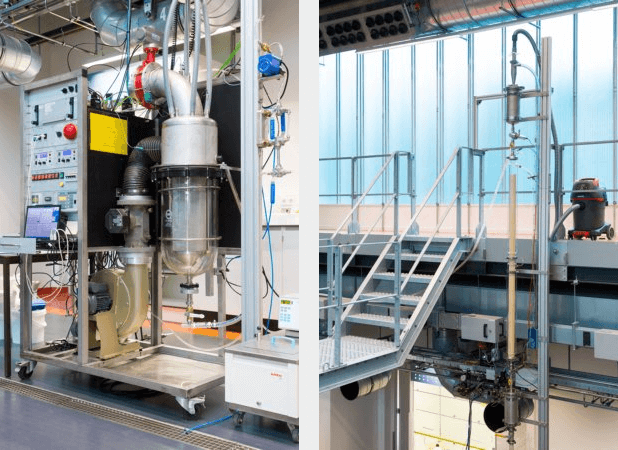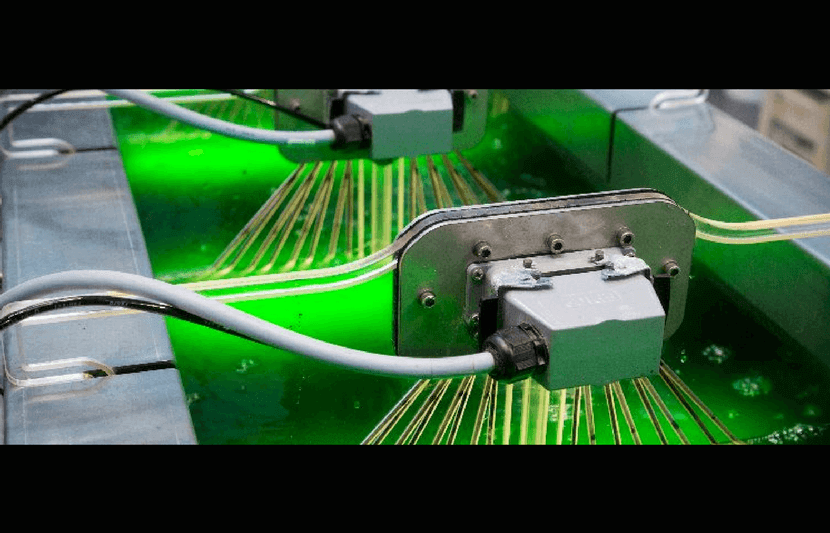Researchers at the University of Twente, the Netherlands, have developed a new device for the capture of atmospheric carbon dioxide to stimulate the growth of algae, an important bio-commodity. The technology can also be used to store solar and wind energy.
The research is led by Dr. Wim Brilman, associate professor of sustainable process technology at the university.
Speeding Up Algae Growth
Algae is an important resource in food production, chemistry and renewable energy, which makes it a valuable bio-commodity.
The device, which is designed for microalgae production, can capture 500 grams of CO₂ daily, or the equivalent of the CO₂ extraction ability of four fully-grown trees.
The addition of CO₂ accelerates algae growth.
The CO₂ capture device operates using particles called “sorbents.” These sorbents enter the device through an air flow and, once they come into contact with atmospheric gases, bind to carbon dioxide molecules in the air. Then, the sorbents travel up to the top of the absorber column, about six meters tall, before flowing back down through a heated desorber and releasing their CO₂ load. The absorbents then proceed with another cycle of CO₂ collection and release.

The CO₂ enriched air, which is released onto an algae reservoir, acts on the algae to spur their growth.
“CO₂ is an essential element in the photosynthesis reaction,” said Brilman.
The researchers focused on CO₂ because they knew from a prior study on algae growth “that the algae growth rate in a bubble column type photobioreactor is strongly related to the availability of CO₂,” he said.
The prior study, he explained, involved the use of “bubble column” that had been “sparged with air at varying CO₂ concentration” and led to the researchers’ finding of an optimum growth rate.
In addition, Brilman said that the use of CO₂ “to enhance plant growth rate is well known and also commonly practiced in horticulture (greenhouses).”
There are many advantages to the device, according to the university. First, its use can benefit greenhouses. Second, it is affordable. It uses approximately 75 euros worth of energy to capture 1,000 kilograms of CO₂, which is a competitive rate. Third, it can be used anywhere in the world because it is flexible and can operate independently.
Storing Renewable Energy
The technology also can be used to store energy produced from solar or wind farms.
Carbon dioxide, when combined with hydrogen, can produce methane, or natural gas, for home use. Therefore, if one were to use the electricity generated from solar panels or wind turbines to power this device, they could effectively “synthesize” methane, which could be stored or used for heating or cooking. Basically, this technology allows energy to be indirectly converted into gaseous form without releasing CO₂ into the air.
The technology is being tested in a housing complex.
What’s Next?
The team’s work is a part of the European project MIRACLES, the goal of which is to develop a Multiproduct Algae Biorefinery. While the project was successfully completed in October 2017, the university will continue its research in the areas of CO₂ capturing and algae growth enhancing.
“The proof of principle runs show great potential, but process and sorbent improvements are certainly possible and under investigation,” said Brilman.
In addition to the production of CO₂ enriched air, the researchers are currently also working on the production of pure CO₂, he said.
The production of pure CO₂, he explained, “is not only relevant for algae cultivation (e.g., for use in closed, tubular photobioreactors), but could also be used in system for carbon capture and utilization, e.g., to store renewable energy in the form of methane or methanol.”
Brilman expects the device to have an impact on the field of green technology.
“CO₂ from air is more and more being considered as an important future renewable source for carbon, needed for the production of materials, chemicals and fuels,” said Brilman. “There is a lot of research going on, on the use of CO₂, without specifying how to get this CO₂. Direct air capture is an enabling technology for all applications based on the use of CO₂. The ‘CO₂ from air’- capture technology makes harvesting of CO₂ possible anywhere. The capture technology itself could also be used to remove CO₂ from gas streams, e.g., to upgrade biogas or to control indoor climate.”
Basically, the device developed at the University of Twente can be used by anyone wishing to harvest carbon dioxide from the atmosphere.
Examples of possible applications could be in “storing renewable electricity at solar- and wind parks, for use in aquaria, carbonation systems or, of course, to enhance cultivation of algae, tomatoes etc.,” said Brilman.



